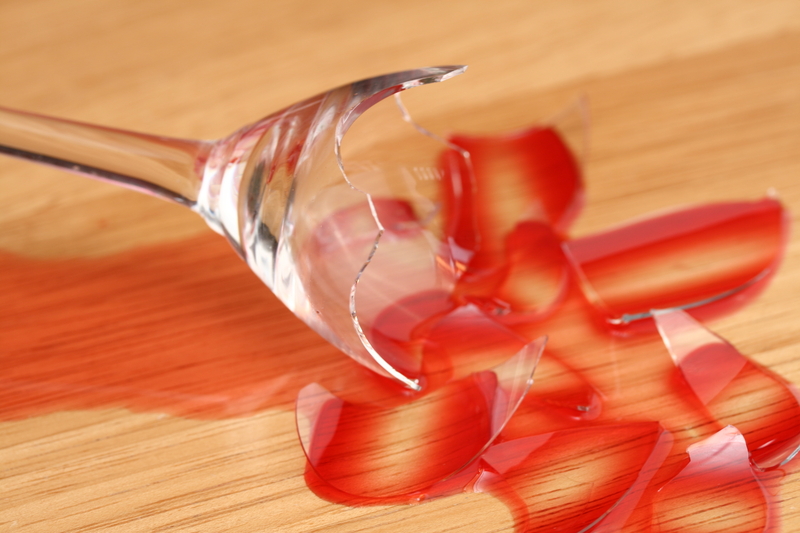Expert Tips for Washing Velvet Curtains Without Damaging Their Luxurious Texture
Velvet curtains are the epitome of sophistication, instantly transforming any room with their plush appearance and rich colors. However, their sumptuous texture comes with delicate care requirements. Many owners wonder how to wash velvet curtains without risking their lush pile and distinctive sheen. Luckily, with expertly guided techniques, you can maintain the opulent look of your velvet window treatments for years to come.

Understanding Velvet: Why Special Care is Necessary
Before diving into cleaning methods for velvet curtains, it's important to know what makes this fabric so unique. Velvet can be made from cotton, silk, synthetic fibers, or even blends. The fabric's signature texture comes from short, evenly cut threads that create a dense pile, resulting in a soft, shiny surface. This pile is sensitive to pressure, moisture, and heat, which can cause flattening, crushing, or even color loss if mishandled.
Because of these vulnerabilities, improper cleaning is one of the most common sources of damage to luxurious velvet curtains. Whether you need a full wash or just a freshen-up, the right approach helps you preserve the original beauty of your drapes.
Quick Facts: Benefits of Proper Velvet Curtain Care
- Prevents fading and discoloration
- Maintains soft, plush texture
- Extends curtain lifespan
- Eliminates dust, allergens, and odors
- Protects against mold and mildew
Your Step-by-Step Guide to Washing Velvet Curtains
1. Always Check the Care Label
Before you attempt any cleaning process, read the manufacturer's label carefully. Some velvet is labeled as dry clean only due to its fiber content or construction. Ignoring this advice may result in permanent texture damage or shrinking. If the label says "dry clean only," it's best not to risk a home wash.
2. Test First: Spot Cleaning Velvet Curtains
If your velvet window coverings just have local stains or dusty patches, spot cleaning can be a safe first step. Follow these expert tips:
- Use a soft-bristled brush or lint roller to gently lift surface dust, pet hair, and lint.
- Mix a mild soap solution - a few drops of gentle dish soap or baby shampoo in lukewarm water works well.
- Dab (don't rub) stains with a clean, white microfiber cloth dipped in the solution.
- Use a second cloth, dampened with plain water, to blot away soap residue.
- Pat the area dry with a towel and allow to air dry completely before rehanging.
Pro Tip: Always test any cleaning solution on a small, unseen area of your velvet curtain before treating visible portions. Some dyes are less colorfast and may bleed or fade.
3. Reviving Velvet with Gentle Vacuuming
Regular vacuuming can keep velvet curtains looking fresh and free from dust buildup. Use a handheld vacuum or an upholstery brush attachment with these tips:
- Set the machine to its lowest suction setting.
- Always vacuum in the direction of the pile to avoid crushing the fibers.
- Work in long, gentle strokes from top to bottom.
This simple technique is excellent for weekly maintenance, helping to extend the time between deep cleanings.
4. Can You Machine Wash Velvet Curtains?
This is the most frequently asked question by velvet curtain owners. The answer depends on the curtain's fiber content and construction. Crushed velvet made from synthetic fibers often fares better with gentle machine washing, while cotton or silk velvet is typically more fragile. Here's how to approach machine washing safely if your curtains' label allows:
- Remove all hooks, weights, or hardware.
- Place curtains in a large mesh laundry bag to minimize agitation and prevent snags.
- Set your machine to the delicate or hand-wash cycle.
- Use cold water only – heat can damage velvet pile.
- Select a gentle, non-bio detergent free from bleaching agents or brighteners.
- Avoid fabric softeners, which can leave residue and dull velvet's sheen.
- Do not spin dry; remove while damp to reduce creasing.
5. Hand Washing: The Best Home Method for Velvet Drapes
If you choose to wash velvet curtains by hand, follow this process for the safest results:
- Fill a bathtub or large basin with cool, clean water and add a small amount of mild, liquid detergent.
- Gently submerge and swish the curtains (don't twist or wring!) for no more than five to ten minutes.
- Drain and refill with clean water for rinsing until no suds remain.
- Press out excess water by rolling the fabric in a towel, never wringing, twisting, or bunching the fabric.
This delicate method helps preserve the unique pile and prevents flattening or damaging velvet's plushness.
6. How to Dry Velvet Curtains Without Ruining Them
Drying is a crucial step in preserving the luxury of velvet curtains. Here's what the experts recommend:
- Never use a tumble dryer. The heat and mechanical action can cause irreversible pile crushing and shrinkage.
- Lay curtains flat, ideally on a fresh, clean towel – reshape to the curtain's original form.
- Alternatively, drape over a drying rack with as little folding as possible.
- Avoid direct sunlight as it may fade colors.
- Allow curtains to air dry completely before rehanging.
Once dry, place curtains back on the rod and let gravity aid in naturally smoothing wrinkles and restoring their elegant drape.
7. Steaming and Ironing: Restoring Velvet's Flawless Look
Velvet should never be pressed with a regular iron directly on the fabric, as this can flatten and mark the pile. If wrinkles do appear after washing:
- Hang curtains and gently steam from the reverse side using a handheld steamer, keeping it a few inches away from the material.
- Use the lowest steam setting to avoid water spots.
- For stubborn creases, a steam iron can be used with a pressing cloth (like a clean, white cotton pillowcase) between the iron and the velvet, but hover rather than press.
Let the curtains hang for a few days for minor creases to fall out naturally.
Professional Velvet Curtain Cleaning: When to Consider It
While home washing velvet curtains can be successful if done carefully, there are situations where professional dry cleaning is the wisest choice:
- Vintage or antique velvet drapes with delicate linings or trims
- Curtains with heavy soiling, stains, or water damage
- Large, floor-length or custom velvet curtains that are difficult to handle
- Uncertainty about the fiber content or if the label recommends professional care only
Benefits of Professional Cleaning
- Expert stain removal and cleaning tailored to specific velvet types
- Preserves integrity, pile, and lining
- Reduces risks of shrinkage, color loss, and distortion
- Saves you time and effort, especially with very large window treatments
How to Keep Velvet Curtains Clean Between Washes
Routine Maintenance Checklist
- Dust or vacuum weekly to prevent buildup that can attract moths or cause matting
- Keep windows closed on windy days to reduce particle accumulation
- Rotate curtains occasionally for even exposure to light and air
- Use sheer or lining layers behind velvet curtains to protect from direct sunlight and dust
- Avoid spraying air fresheners or household cleaners directly on the fabric
Common Velvet Curtain Washing Mistakes to Avoid
To make sure your washing velvet curtains experience is successful, watch out for these classic errors:
- Using hot water, which causes fading and pile damage
- Overloading the washing machine, leading to fabric stress and wrinkling
- Rubbing or scrubbing stains harshly
- Twisting, wringing, or folding while wet
- Hanging velvet in direct sunlight to dry
- Trying to iron directly on the velvet face
- Neglecting to rinse out all detergents, which may stiffen the material

FAQs: Washing and Caring for Velvet Curtains
Can velvet curtains go in the washing machine?
Check your manufacturer's instructions. Crushed polyester velvet curtains can sometimes be machine washed on a delicate cycle, while cotton or silk velvet is typically not recommended for machine washing.
How often should I clean velvet curtains?
With regular dusting or vacuuming, a deep wash or professional cleaning is usually needed only every 12-24 months, unless there's visible staining.
Can I use vinegar or baking soda on velvet?
It's not generally advised, as these may react with dyes. Stick with mild baby shampoo or gentle soap for safe results.
What's the best way to keep velvet looking plush after cleaning?
Air dry flat, then gently brush the pile in the direction of the nap when fully dry to restore its texture.
Is it safe to steam velvet curtains?
Yes, but always steam from the reverse or hold the steamer at a short distance from the fabric. Never let hot water droplets touch the pile directly.
The Bottom Line: Enjoy Clean, Luxurious Velvet Curtains Without Compromise
Caring for velvet curtains may seem daunting, but with these expert washing tips, you can refresh your home decor without risking your drapes' plush texture. Spot cleaning velvet curtains is often enough for light stains, while hand washing or careful delicate machine washing may work for some fabrics if the manufacturer allows. Drying flat, avoiding heat, and gentle steaming ensure your velvet's rich sheen and softness remain intact.
For irreplaceable or heavily soiled items, don't hesitate to seek professional velvet curtain cleaning services for optimal results. With the right techniques and regular maintenance, you'll enjoy sumptuous, elegant velvet window coverings that stay as beautiful as the day you hung them.
For more information on how to clean high-end home textiles, be sure to check our other expert cleaning guides!



